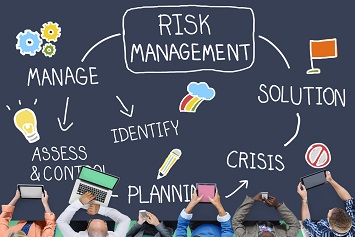In the 20+ years I have been engaged in helping organizations develop and maintain their risk management framework, I have come to understand that risk assessment is the backbone.
Without an effective process for identifying, analyzing, and evaluating the organization’s unique risks, the rest of the components of risk management have no foundation upon which to function. That includes developing a risk treatment plan, communicating the plan to stakeholders, monitoring the implementation of the plan, reviewing/revising as needed, and reporting to management. It stands to reason that if the backbone of risk management is risk assessment, the caliber of the risk assessment teams and the effectiveness of their functioning ultimately determine the quality of the resultant risk profile.
Developing and maintaining high-functioning risk assessment teams usually falls to the occupational safety and health (OSH) professional. Critical components include:
- Identification of relevant stakeholders,
- Development of customized training content,
- Crafting processes to ensure that the completed assessments meet the needs of the organization for content and quality, and
- Sustaining and growing the teams over time.
The OSH professional tasked with this process needs to have a solid understanding of the risk management framework in the current voluntary consensus standard (ANSI/ASSP Z690 series) and recognize how it establishes the critical role risk assessment teams play in the process. They also need to be able to identify key internal and external stakeholders and select from that group the members of the risk assessment team who will fully represent the needed technical expertise and understanding of the task being assessed. Included here is the ability to determine when to develop multiple risk assessment teams to both address a varying risk profile as well as maximize the output when numerous tasks need to be assessed in a brief time period.
Risk assessment teams need to be trained to perform their duties and developing a customized training curriculum and matrix is a significant undertaking. Building on a foundation of basic adult learning principles and an understanding of risk assessment increases the likelihood that the team will produce high-quality assessments and improve their ability to function without significant oversight by the OSH professional.
Once the teams are identified, trained, and functioning, the last piece of the process includes sustaining the teams over time—ongoing continuing development of the team’s expertise, adding new risk assessment tools when needed, intervening when a team’s functioning is dropping below expected quality, and identifying ways in which high-performing team members can act as senior assessors.
This may sound overwhelming at first, but it can be managed with an improved understanding of the critical components and a personalized plan of action. Join me on September 5, 2019, from 1:30–3:00 pm EDT, for an all-new webinar that will provide the opportunity to learn about all of the above as well as have your individual questions answered. Additional details and registration information can be found here.
 Pam Walaski, CSP, is Senior Program Director at Specialty Technical Consultants, Inc., and has nearly 25 years of experience helping organizations create sustainable occupational safety and health programs. Join her for her live webinar on Thursday, September 5, 2019, from 1:30–3:00 pm EDT: A-List Risk Assessment Teams: How to Create, Train, and Manage an Effective Risk Assessment Team. After attending this webinar, you will be able to: Pam Walaski, CSP, is Senior Program Director at Specialty Technical Consultants, Inc., and has nearly 25 years of experience helping organizations create sustainable occupational safety and health programs. Join her for her live webinar on Thursday, September 5, 2019, from 1:30–3:00 pm EDT: A-List Risk Assessment Teams: How to Create, Train, and Manage an Effective Risk Assessment Team. After attending this webinar, you will be able to:
|

